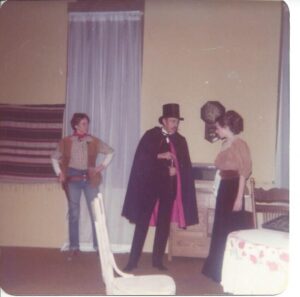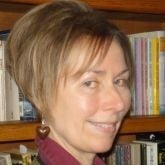It’s been a while since I’ve blogged about my writing projects. This summer I’m slogging away on the fourth book in my contemporary fantasy/mythology series, working title Justice in Big-G City. I’ve also started research for a romantic suspense novel, beginning with the question What makes a villain?
That’s easy. Villains are bad guys.
Not so fast, 9. One of many online dictionaries defines a villain (noun) this way:
“. . .a character whose evil actions or motives are important to the plot”
Villains may well be a bad people with evil motives who take evil actions, but what I want to know is How did they get that way?
Why does that matter? Bad is bad, right?
Bad, as you say, is bad, 9, but that doesn’t necessarily make villains interesting from a reader’s or writer’s point of view.
Is it like acting, when you figure out what motivates your character?
Bingo, Lily! What they do may be evil, but why they do it is interesting. I started my research by reading three suspense/horror/romance classics:
The Phantom of the Opera (Gaston Leroux © 1911)
Rebecca (Daphne du Maurier © 1938)
Wide Sargasso Sea (Jean Rhys © 1966)
Wow, those are really old books!
Yes, 9, and they carry much insight about what makes a villain a villain. Not all villains wear black capes, but Erik, “The Phantom,” certainly has one of these in his wardrobe. The black cape and top hat are signature costume pieces for the classic melodrama villain.

Classic melodrama villain: With (Uncle) Vern Jones and a mysterious gal got up like a sheriff in Key City Players 1976 production The Curse of an Aching Heart. .
But enough about clothes. While most characters in books and plays are carefully dressed by their authors, it’s what happens inside villains that makes them compelling. In the case of Erik, he is a man of incredible genius, born terribly disfigured and, for that reason, rejected by his own mother. Also, he has zero empathy for other human beings and does not seem to know the difference between good and evil. His terrible acts at the opera house are all in support of his driving motive:
“All I wanted was to be loved for myself.”
In Rebecca, the villain is hard to identify at first. Everyone seems to love the late Rebecca deWinter, and her husband appears to be crushed by her death, even after he remarries. Rebecca’s housekeeper, Mrs. Danvers, still works at the deWinter ancestral mansion, Manderley. Dressed in black, cold in voice and manner, and completely devoted to her dead mistress, Mrs. Danvers can easily be mistaken for a villain. But as it turns out- –
Stop! I haven’t read that one yet! I haven’t even seen the movie.
By the time you’re my age, Lily, they will have done at least two remakes since the 1940 classic with Lawrence Olivier and Joan Fontaine. The American Film Institute rates Judith Anderson’s portrayal of Mrs. Danvers in that film at number 31 in the top 50 movie villains of all time, but- –
No, don’t tell me!
Let’s just say not everything is as it appears on the surface, and I believe the tradition of literary villains is richer for it.
Moving right along, Wide Sargasso Sea tells the story of someone we meet in Jane Eyre (by Charlotte Bronte, writing as Currer Bell, 16 October 1847). That someone is Antoinette, later dubbed Bertha by her unsympathetic fortune-seeking husband, Edward Rochester. In Bronte’s classic, “Bertha” has gone mad and is secretly incarcerated on the top floor of Edward’s country estate, Thornfield Hall. Both Bertha and Edward have a claim to villainy in that book, with deep-seated reasons expanded upon by Jean Rhys in Wide Sargasso Sea. Antoinette suffers through a terrifying and traumatic childhood in a family prone to madness; Edward is an unloved second son who is later deceived about his wife’s family and mental health, a wife his unloving family compelled him to marry for money.
Creating believable villains is a complex undertaking. The only outright evil person I encountered in these three books is the one I did not identify in Rebecca- –
Thank you.
You’re welcome, Lily. Villains must be complex in order to fire the imagination, as well as kindle reader empathy. It’s harder to hate someone who’s been battered by trauma, rejection and lies. Villains have their reasons.
That is why we recognize that villains are just a little bit like us.

